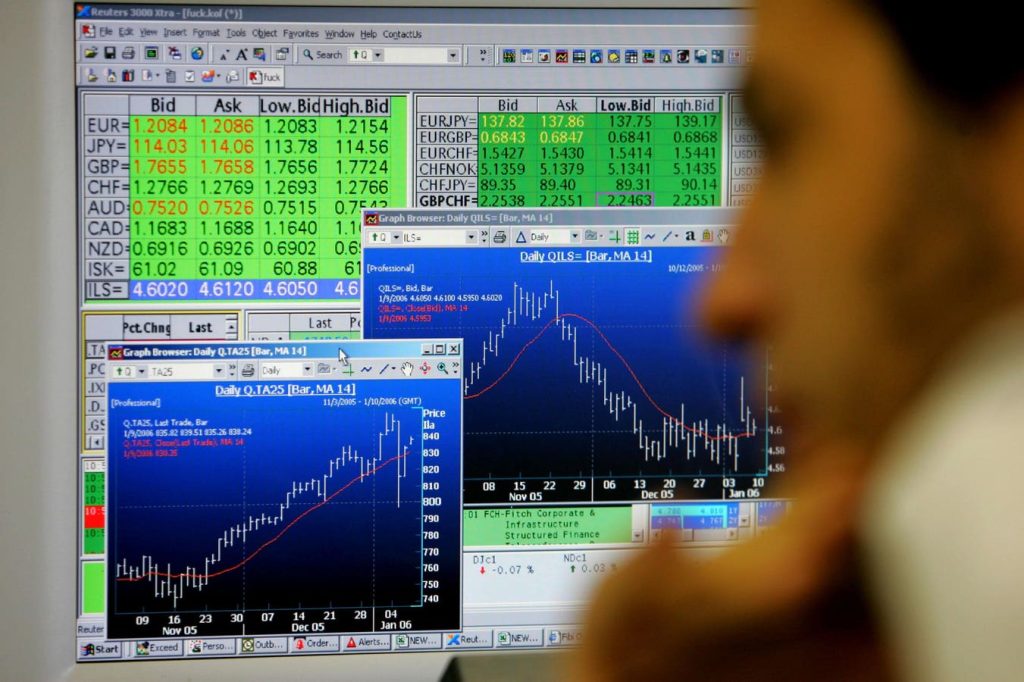A few years ago Koen De Leus began to feel uncomfortable. Despite a multi-decade career, BNP Paribas Fortis’ Chief Economist couldn’t find a framework for understanding what he was observing in world markets.
His colleague, Chief Strategist Philippe Gijsels, offered to help. Together they created a new framework, which is explained in their book: The New World Economy In Five Trends.
If you are looking to construct longer-term investment themes, the book is a good launching point. It outlines the slow-burning forces that will shape markets over the next decade. You’ll need to do some work to translate their themes into specific trades. Their recommendations are primarily high level, although I discuss a few specific ideas below.
The five trends are (1) Innovation (2) Climate (3) Multi-Globalization (4) Debt and (5) Ageing. Since I’ve written about these topics in previous posts, instead of reviewing each trend, I’ve borrowed the book’s framework and extracted five important ideas.
1. Four of their trends point to higher inflation and interest rates.
I get it. You’re tired of bad news. Don’t be put off – De Leus & Gijsels’ (DLG) book is mainly optimistic.
But, since interest rates and inflation are so important, we need to be clear-eyed about them. DLG expect both to stay at or above current levels – not always, but on average.
Ageing societies are inflationary – old people buy more goods and services than they produce. And the world is getting older faster than we expected even a few years ago.
Government debt is at unprecedented peacetime levels. It will be hard to resist the temptation to allow higher inflation to reduce the burden of interest payments. Markets still don’t believe this will happen. Once they do rates will embed a higher risk premium, keeping bond yields higher1.
Multi-Globalization is also inflationary. Complex supply chains brought us ultra-cheap goods. ‘Friend shoring’ production will be more expensive. We’re already seeing that show up in a higher US trade deficit as goods previously made in China get assembled elsewhere.
Mitigating climate change is going to be costly. The vast capex needs will put upward pressure on the price of required inputs and the price of capital (interest rates).
2. Process innovation will trigger productivity growth
Now the good news: innovation might (eventually) be powerful enough to counter the upward pressure on rates and inflation.
DLG believe we are headed for a wave of ‘process’ innovation driven by AI, additive manufacturing (3D printing), synthetic biology and eventually cheap renewable energy.
We’ve experienced this type of innovation before and the results were very beneficial. Think about the combined impact of electricity and assembly lines on car manufacturing. There was a dramatic expansion in production and fall in unit costs leading to more GDP growth and higher real wages.
This is different from the digital product innovations of the last few decades. These innovations have benefited users but in many cases have not generated GDP growth.
They use Wikipedia as an example. It is a digital good with clear economic value. Yet we don’t pay for it. Its existence makes us better off in a broader sense but that increased welfare doesn’t translate into more economic activity2.
Process innovation is already happening but DLG think the full effect is still 5-10 years away. When it hits, productivity could rise by 1.5-2% per year. The resulting fast economic growth would allow debt / GDP levels to fall, possibly triggering a virtuous circle of lower inflation and rates.
3. Copper/Gold: Wall of demand meets limited supply
Both copper and gold are trading near all-time highs. DLG believe they will go much higher. Why?
Of the metals essential to the energy transition copper seems the least likely to get replaced with new technology. Existing mines cannot meet anticipated demand and new mines takes a long time to develop. Commodity fund manager Andurand posted a similar story about demand far outstripping supply.
There are a couple of catches.
It’s not straightforward for most investors to get copper exposure. And emerging market governments, fully aware of copper’s value, could nationalize mines and club together to form an OPEC-like cartel to control the market.
DLG’s bullish view on gold flows from two sources – higher expected inflation and a desire to diversify from the dollar. Gold supply expands by a few percent each year, so increasing demand from those seeking diversification can easily drive up prices.
The book suggests a trade – gold mining companies with unexploited copper deposits in existing mines. These copper supplies could be developed fast, allowing the companies to benefit from rising prices of both metals. No specific names are mentioned, but for investors willing to dig (sorry, couldn’t resist), it seems intriguing.
4. A bridge made of (natural) gas
DLG identify fossil fuel companies as long-term losers as their assets get stranded by falling demand, taxes and regulations.
But during our conversation I pointed out that between now and then there is a chasm. For now there is a continued need for fossil fuels to produce power when renewables can’t and to meet surging energy demand from AI. Natural gas is the cleanest fossil fuel and it therefore seems to have an important place as a bridge.
DLG said I was ‘totally correct’! How long that bridge will span is unknown, but betting on natural gas infrastructure seems like a good way to hedge inflation and get AI exposure.
5. Your grandma won’t crash the market
One story related to ageing is that boomer retirees will crash the market by selling stocks to fund their golden years.
DLG are skeptical. There isn’t much evidence that the percentage of assets invested in shares collapses as one gets older. Why is that?
Maybe grandma has friends who have reached 100 and is holding on to stocks to grow her portfolio in case she hits the century mark too. Maybe she is saving to cover high costs of eldercare.
Or maybe she just wants more money to give to you!
Listen to my conversation with Koen De Leus & Philippe Gijsels:
Read the full article here










